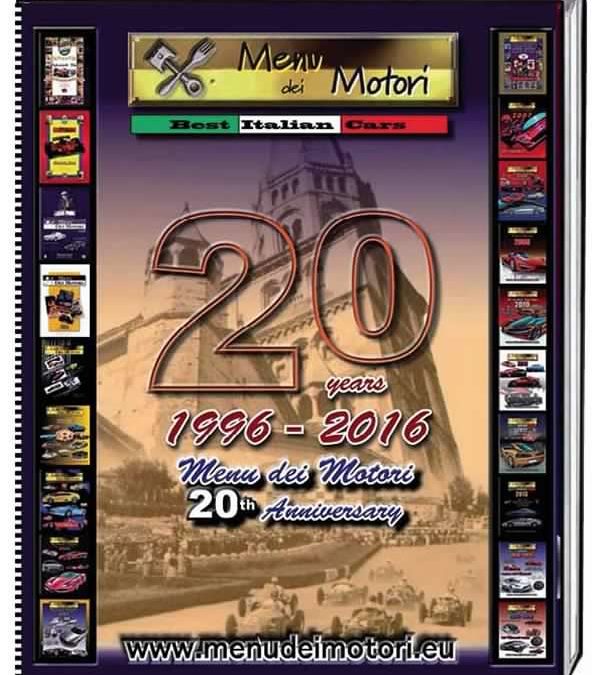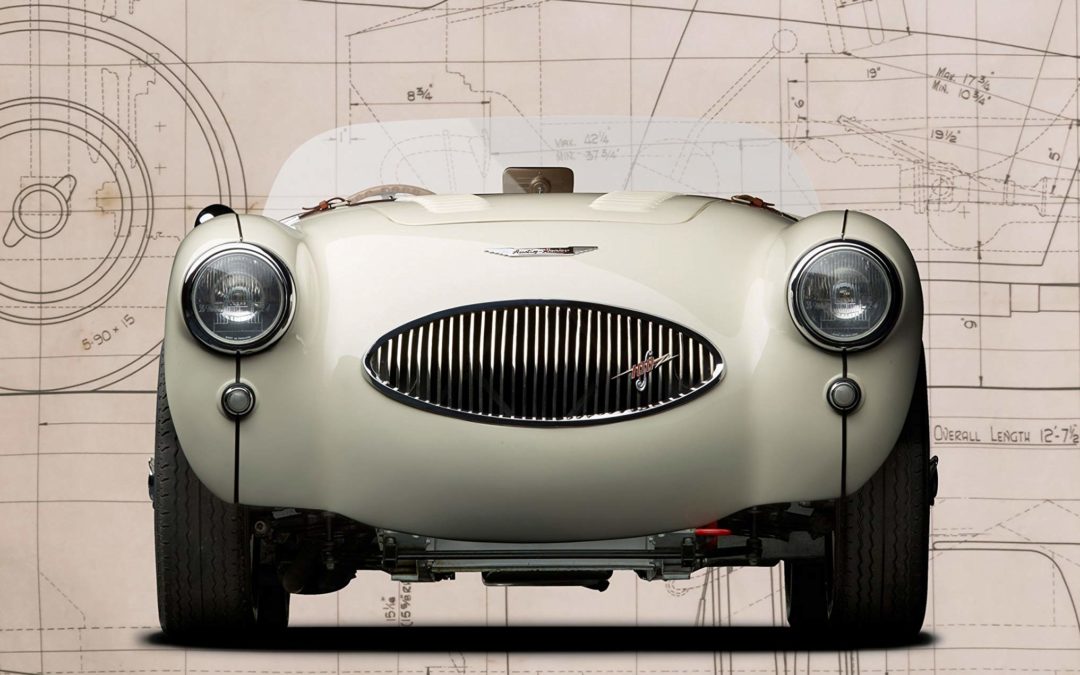
Written in collaboration with Gerry Coker, the designer responsible for the iconic Austin-Healey 100 and Sprite, this extraordinary volume represents the most accurate and complete account of the sports cars built at Warwick, Longbridge, Abingdon and West Bromwich. The author had unprecedented access to Donald and Geoffrey Healey’s private papers, diaries, scrapbooks and photo albums, corporate and financial records from BMC, Donald Healey Motor Company and Healey Automobile Consultants, the files of Jensen Motors and Nash-Kelvinator, dozens of personal interviews and exhaustive research into previously unavailable primary source material. As a result, Healey: The Men and the Machines offers a compelling examination of the true story behind these incredible automobiles and the individuals who created them.
From his early childhood and heroic service as an aviator in the Royal Flying Corps during the First World War, this book provides a comprehensive account of Donald Healey’s motoring career, including competition outings and his involvement with Invicta, Riley and Triumph. The story of the Healey marque’s birth during the darkest days of the Second World War is told through the words of the men involved, revealing the myriad obstacles that faced the small team during a period of strict rationing, limited resources and government meddling.
Fast, elegant and endowed with excellent handling, the early Healey sports cars were among the fastest in the world, acquitting themselves admirably at events such as the Alpine Rally, Mille Miglia and the 24 Hours of Le Mans, but Warwick’s survival was constantly in doubt until the landmark agreement that resulted in the Nash-Healey erased many of small firm’s financial struggles. With access to Nash-Kelvinator’s internal correspondence for the first time, the authors are able to set the record straight about this crucial period in the marque’s history, including the controversial machinations behind the development of the Healey Hundred that made a smash debut at the 1952 London Motor Show.
Lavishly illustrated with previously unpublished photographs, Austin-Healey competition and record-breaking efforts are covered in exquisite fashion, seen through the eyes of legendary names like Rauno Aaltonen, Clive Baker, Paddy Hopkirk, Count Johnny Lurani, Lance Macklin, Timo Mäkinen, Roger Menadue, Don and Erle Morley, Pat and Stirling Moss, Carroll Shelby, John Sprinzel, and Ann and Tommy Wisdom. Equally fascinating are the stories behind the troubled Jensen-Healey and Donald Healey’s attempts to continue building sports cars well into the 1980s, refusing to enter a sedate retirement that would have been so richly deserved.
Destined to become the definitive reference on the subject, Healey: The Men and the Machines includes over 200,000 words, more than 700 detailed footnotes, and eight appendices that cover the competition and record breaking activities of the various models, specifications for every model produced, including the limited production variants, and Donald Healey’s personal musings on racing and sports car design. An instant classic, this is a work certain to inform and entertain enthusiasts of the men and machines that brought the world to its feet at a time when Britain was down on its knees.
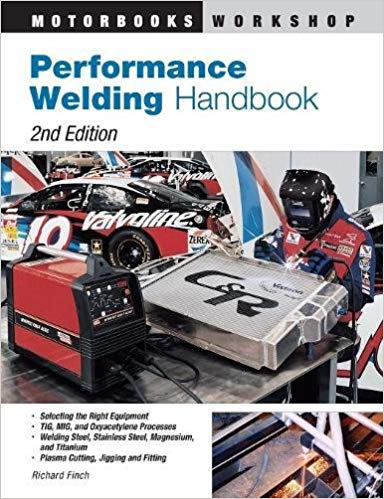
Metal fabricators of every ilk, whether they’re working on race cars, experimental aircraft, or custom motorcycles, will benefit from this updated guide to top-quality welding. Performance Welding demonstrates the newest fabricating techniques and covers the latest in welding equipment. This complete guide written by NASA welding consultant Richard Finch helps a fabricator select the proper equipment, prepare jigs, and effectively weld 4130 steel, stainless steel, aluminum, and magnesium. It also covers plasma cutting, the technique used extensively on Monster Garage that has revolutionized metal working. 2nd ed.
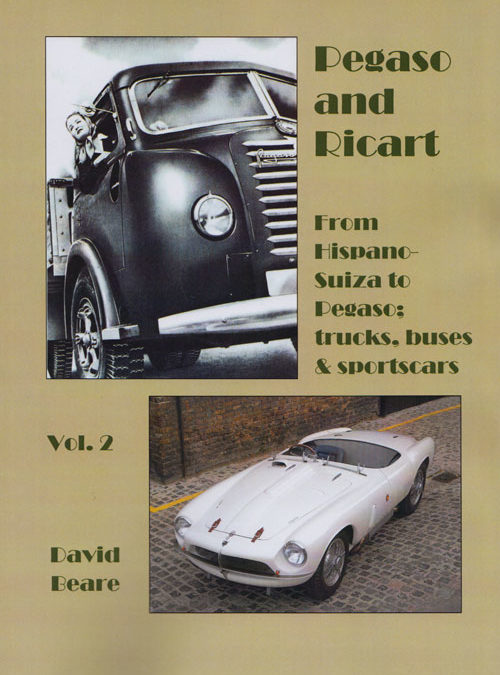
The second volume of the Hispano-Suiza and Pegaso books
The book covers the career of Catalan engineer Wifredo Ricart and his early designs and creations of the 1920s and 1930s in Spain- (Ricart y Peréz 1922-26), S.A. Automóviles Ricart (1926-28) and Ricart España (1928-30). Ricart then moved to Italy and was employed by Alfa Romeo as a consultant engineer from 1936 to 1945, where he was involved in the design and building of the Alfa Romeo Tipo 162 V-16 and the mid-engined flat-12 Tipo 512 racing cars, only for WWII to interrupt developments, so neither car was raced. It was during this period that Ricart clashed with Enzo Ferrari, who was racing-team manager for Alfa Romeo at the time.
In the early war years Ricart designed and built the extraordinary 28-cylinder 2,000bhp Tipo 1101 Alfa Romeo aero-engine, which had seven banks of four cylinders and was exceptionally light and compact.
Ricart, accompanied by a small group of loyal Italian engineers and ex-collegues, left Alfa Romeo and chaotic Italy in 1945 and returned to Barcelona. They were recruited by the government of Generalissimo Franco to create a new truck-building company, Pegaso, to produce desperately-needed trucks and buses for Spain, which they did with great success, designing and developing a number of modern industrial vehicles. Most of this took place in the ex- Hispano-Suiza factory in Barcelona, taken over by the government for this purpose, complete with the highly-skilled and experienced workforce which had previously built Marc Birkigt’s Hispano-Suiza T-35 aero-engines.
Part of Ricart’s remit was to educate and train a new generation of Spanish engineers, technicians and mechanics able to deal with modern technologies being used throughout Europe, but which were sorely lacking in Spain. The astonishingly advanced Pegaso Z-102 and Z-103 sportscars of 1951-1957 were in part the result of this training program, giving hands-on experience to legions of apprentices and enhancing Spain’s prestige as a new motor-manufacturing nation.
Only 86 Pegaso sportscars were made in total before Ricart was ordered to desist and concentrate on trucks and buses again by a reactionary management under political control. The political, social and economic influences which dictated Spain’s progress through the post-civil war era of 1939-1960 are also studied as they are important backgrounds to the evolution of the Pegaso company.
Mainly Spanish sources have been used to give an accurate picture of events leading up to Ricart’s creation of the legendary Pegaso sportscars and their subsequent careers in motorsport or on the Concours d’Elégance circuits. Many Z-102s have survived, despite determined efforts by Pegaso management in the late 1950s to erase them from the company’s history. Pegaso sportscars are now highly-prized worldwide.
A4 format, soft covers, 117 pages with colour and b/w images throughout, mostly contemporary with the period.

One day in early 1960, the French consulate in Detroit organised a cocktail party. Because of his knowledge of the French language, designer Henry De Ségur Lauve was invited along as an interpreter. At the party, he met Pierre Bercot, general manager of Citroën. They got talking about Citroën design and Bercot invited De Ségur Lauve for a meeting in Paris. That conversation went positively and in May 1960 De Ségur Lauve signed a cooperation agreement with Citroën to produce design proposals that suited the taste of American consumers.
From then on, De Ségur Lauve came out with a fair number of sketches with a decidedly American influence for new models. The first designs are still sometimes reminiscent of facelifted DSs, but soon they look more like spacecraft than cars for everyday use. De Ségur Lauve had access to Citroën’s design studio and could see what the designers were working on, which allowed him to create ‘Americanised’ variants based on those models. Examples found in this book include proposals for the later Citroën CX and the interior of the Citroën SM.
Much of De Ségur Lauves spectacular designs ended up in the Citroën archives and were forgotten. After more than 50 years, this book showcases his work prominently for the first time. A unique piece of Citroën history!
The texts in the book are in Dutch, French and English.
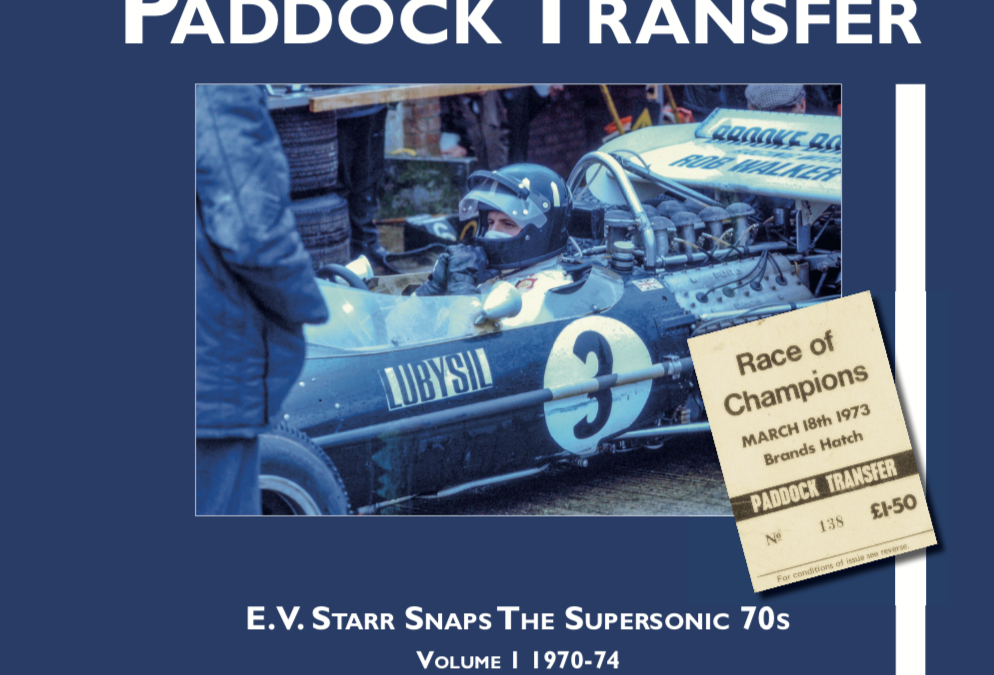
The dynamic duo are back! Hot from the success of their first collaboration, “Admission 7/6′ “, authors Tim Beavis and Guy Loveridge are releasing a second book based on the personal photographs taken by Mr E.V. Starr, the real “star” of the show. This time they are covering images taken by him between 1970 and 1974, not just covering Grand Prix racing, but also dabbling into other forms of the sport.
For those that missed the first book, Mr Starr was a keen photographer and motorsport fan, and compiled a collection of images intended for his own enjoyment. He did not have the privilege of press accreditation but had the knack of being in the right place at the right time, whether with “a nod and a wink” to the steward on the gate, or just working out the best places to stand. Therefore, to the photographic purist, some of the shots will not be technically perfect; however, what they do show is detail that would otherwise be missed and lost to the mists of time.
Messrs Beavis and Loveridge have been able to raid the information stored at the Silverstone Museum to flesh out the details and stories connected to the images and bring to life a different era of the sport, much of which we in the modern day will never get to experience. And also, to get character stories with personalities of the day, with personal accounts from Jackie Oliver, Mike Wilds, and the late John Surtees, and one of the early grid girls, Sue Lehmann, who went from being a beauty consultant for Yardley to working on the grid with the BRM team at events, and consequently had time with many of the greats of the time.
With hillclimb, historic racing, and lower category race formulas as well as motorcycles being covered, there is something for everyone to appreciate. The photographs and text are cleanly presented, making each page turn feel like opening Pandora’s box of secrets, and it will be so easy to sit and lose time going from image to image, from cover to cover.
Limited edition of 400 copies
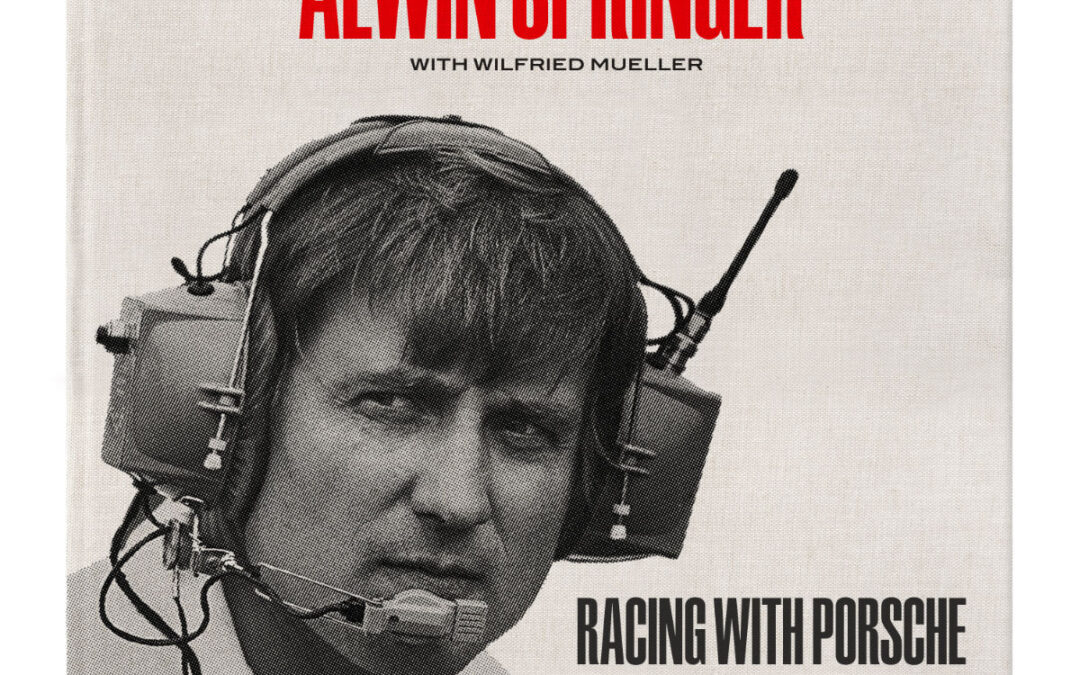
Growing up in the Ruhr area of Germany, Springer emigrated to Canada in the 1960s, but soon settled in California due to the warmer weather. There, after further improving his skills, the trained car mechanic/electrician found a job with Porsche specialist Vasek Polak and from then on looked after Polak’s Can-Am race cars as a mechanic.
Later, Springer started his own venture Andial with former Polak colleagues Arnold Wagner and Dieter Inzenhofer. The now-legendary tuning company went on to compete successfully in IMSA and, with the Andial engines, enjoyed quite a bit of success in other racing series as well. Andial became the number one address for Porsche customers in the USA, and even at Le Mans, customers of the German marque started using Andial engines. The secret of the California-based German trio: they had entrusted a capable man in Silicon Valley with the task of decoding the engine control system of the Porsche factory and thus making all parameters freely adjustable. Alwin Springer and his team perfected their set-ups in hours of test-bench runs. Morever, Springer also had a key role in the relaunch of Porsche Motorsport North America at the end of 1989 and is still active as a consultant for PMNA today.
Alwin Springer, together with Wilfried Müller, summarises his experiences from Can-Am, IMSA and the modern era at PMNA in 47 entertaining chapters, accompanied by countless photos from his private collection dating back to his early years with Vasek Polak.
Hardcover with slipcase
Limited to 963 copies, individually numbered
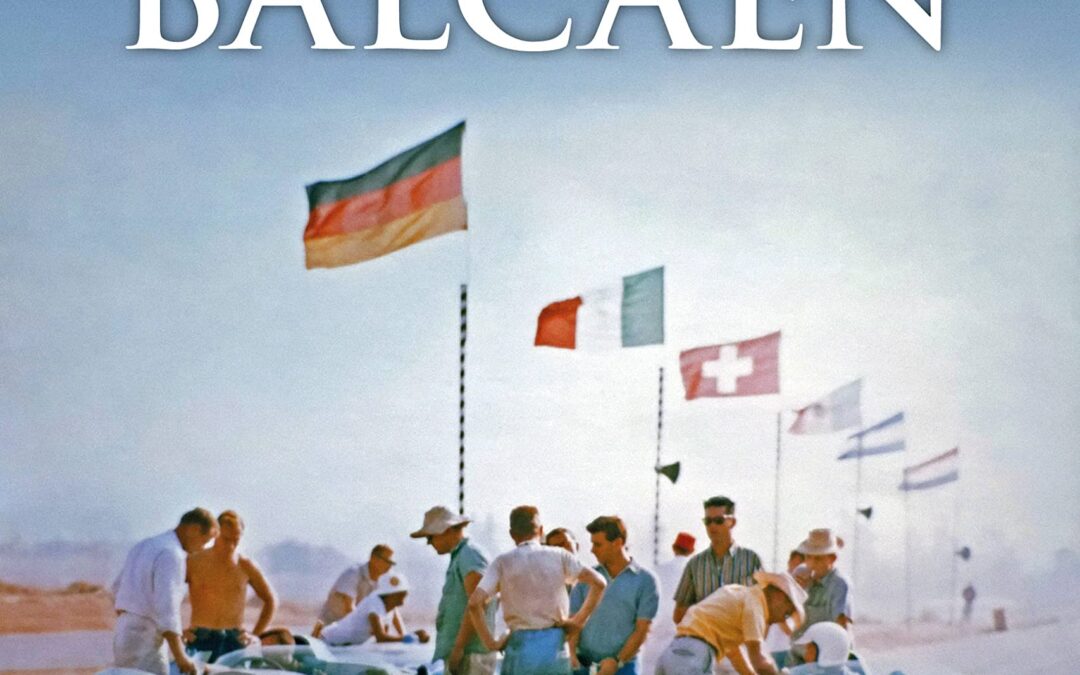
Raoul ‘Sonny’ Balcaen grew up in Los Angeles at a time when it became the epicentre of American motor racing, nurturing a vast talent pool of people whose influence has echoed through to today.
As a teenager, he successfully competed with his home-built Top Fuel dragster during the formative years of the sport. With Lance Reventlow, he worked on the famous Scarab sports cars and was standing in the dyno room when the team’s all-American Formula 1 engine was fired up for the first time. A period as Jim Hall’s crew chief and a close association with Carroll Shelby added to the know-how that guided him towards becoming a successful entrepreneur and led to all that followed.
- Aged 17, Balcaen built his own Top Fuel drag racer, the ‘Bantamweight Bomb’, which he developed relentlessly and drove to many successes.
- His role in the fabulous Scarab sports cars — the landmark all-American racers — and insights into life with their creator, the incomparable Lance Reventlow.
- Working as crew chief to the brilliant Jim Hall, preparing and running his Lotus Eleven and Lister-Chevrolet long before the famous Chaparrals emerged.
- A second spell with Scarab, this time with the Formula 1 project — the first American Grand Prix car — plus a special job for Reventlow converting a Scarab sports racer into a street car.
- Onwards into setting up his own successful business, IECO (Induction Engineering Co), to create and sell high-grade performance and appearance accessories, with Chevrolets — especially Corvair and Vega — featuring strongly.
- His many-faceted dealings with Carroll Shelby, leading to consultancy and even assignments as occasional Shelby American company pilot.
- Along the way we meet many other big names of the era, including Chuck Daigh, Bruce Kessler, Warren Olson, Dick Troutman, Tom Barnes, Phil Remington, Ken Miles, Leo Goossen, Jim Travers, Frank Coon, Ed Donovan and Pete Brock.
This engaging memoir is the very personal history of a momentous time and place in which we meet a who’s who of West Coast road-racing heroes.
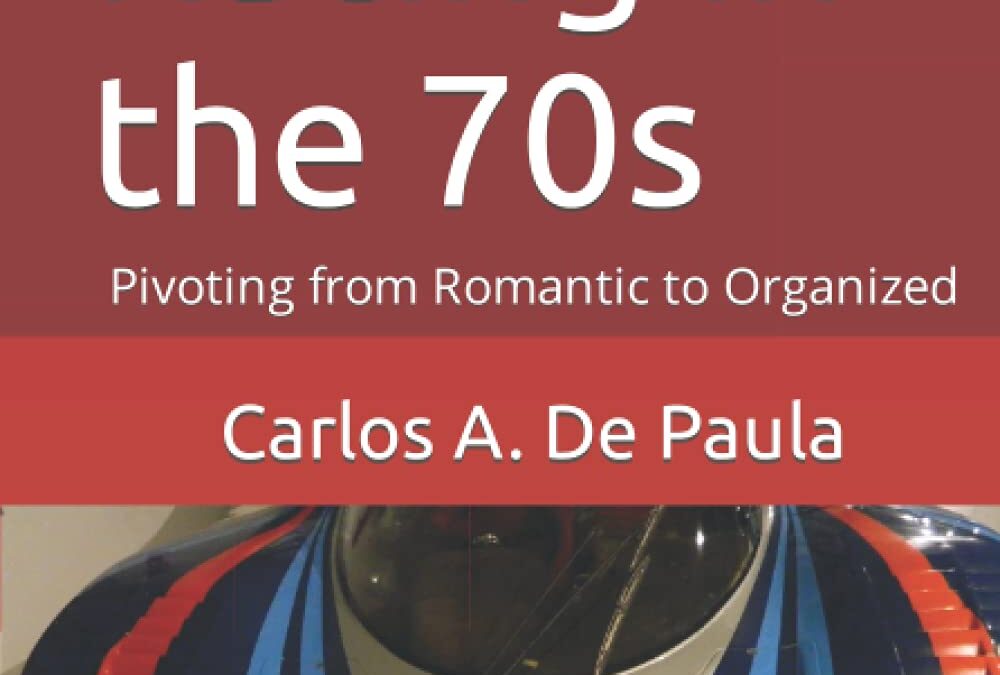
Motor Racing in the 70s has 242 photographs from a large number of countries and categories, many of them rare and part of private collections. This is a reference book on global motor racing activities in the 1970s which strives to provide much obscure information, analysis and data on single seater, touring car, GT and sports car circuit racing and hill climbs during the decade. In addition to Formula 1, Formula 2, Formula 5000, NASCAR, Can-Am, Interserie, World Manufacturers Championship, Lower Formulae, European Touring Car Championship, Formula Indy, IMSA, SCCA, British Club Racing, and much more is covered, including huge lists of venues, drivers and car manufacturers not available elsewhere. The domestic scenes and venues in 85 countries in all inhabited continents are discussed, in addition to a new section on standalone races and short series, providing much surprising information. Truly a must-have for any motor racing fan, thousands of new pieces of information have been added to the 472-page, 180,000 word book. The car maker section has been upgraded, identifying in which countries different brands raced. The list of champions worldwide has also been greatly expanded, making this reference work even more invaluable to the true racing enthusiast than the first edition. Thousands of drivers from over 85 countries are covered. Learn more about Mario Andretti, Emerson Fittipaldi, James Hunt, Niki Lauda, A.J. Foyt, Al Unser, Richard Petty, Jacky Ickx, Jackie Stewart, Rick Mears, Peter Gregg, Brian Redman, Derek Bell, Henri Pescarolo, Cale Yarborough, Jochen Rindt, Jack Brabham, Mark Donohue, Peter Revson, Denis Hulme, Nelson Piquet. Tons of statistics specific to the decade, an analysis how racing developed from a romantic to an organized activity during the era, incisive commentary on financial issues, sponsors, non-driver personalities, female racers, media, year-by-year highlights. Hundreds of sources have been consulted in over 12 languages, and much of the information covered is available for the first time in English.
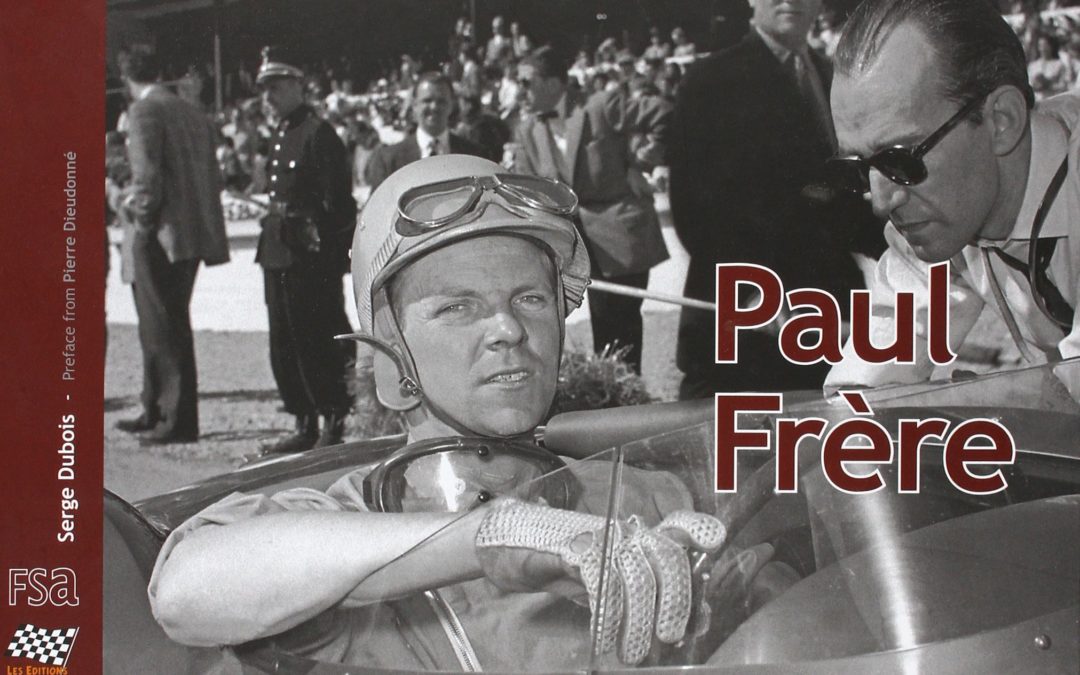
The Story of Paul Frère Journalist and Racing Car Driver
Paul Frère died in 2008 aged 91 and this is the first posthumous work on one of the world’s foremost auto journalists to appear. Still professionally active until his last months, the Belgian was a top flight racing driver in the 1950s and after winning Le Mans at the fourth attempt, retired to concentrate on journalism. Already well known as a race reporter, he became the doyen of motoring writers, his insatiable curiosity about all things automotive and mastery of detail making his copy amongst the most authoritative anywhere. Never a formally trained engineer, he could nonetheless grasp technical concepts and convey them and his ability to do this in English and German as well as his native French gave him international visibility. Author of several works on driving and racing, the way he could communicate exactly how a car was behaving meant that his skills as a consultant were always in demand; long a privileged insider at Porsche, he was also much appreciated in Japan where he struck up enduring friendships. For Mazda and Honda in particular, his assessments helped them build a European flavour into their cars.
An exceptionally modest and unassuming individual, he always appeared surprised at the reverence he inspired and the charismatic Frère always managed to make his interlocutor feel special. Now his life is celebrated in this compilation by Serge Dubois of his early life, racing career, and his activity as a journalist and adviser. The format of the book is landscape and the work is primarily pictorial. The author has had access to family and personal archives and the result is numerous previously unpublished photographs. The bulk of the text comprises reports of Frère’s races, mostly his own accounts turned into the third person; a substantial section is given over to tributes from individuals who knew and worked with him.
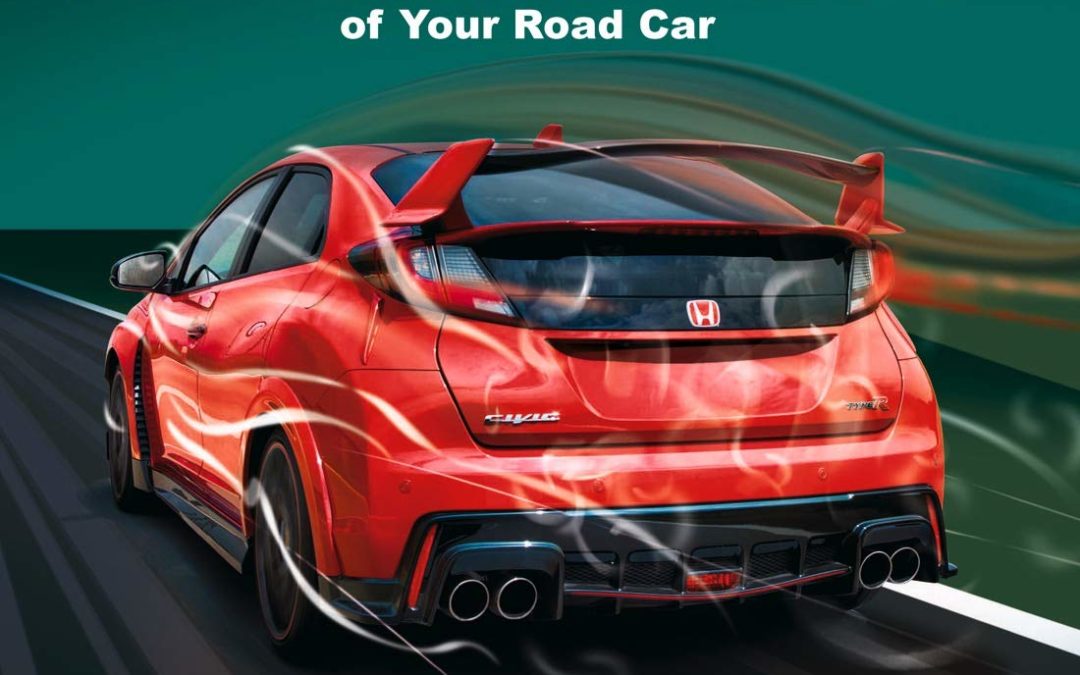
Modifying the Aerodynamics of Your Road Car is a unique handbook that assumes no starting knowledge of vehicle aerodynamics. It begins with simple ideas and finishes with sophisticated and effective aerodynamic modifications that work.
Three major chapters cover on-road testing techniques that give you all the information you need to decide what modifications you should make – and, after you’ve made them, how well they work. Low-cost techniques allow you to visualize the patterns of airflow over your car so that you can actually see the problem areas that need improvement. Uniquely, you’re also shown how to measure aerodynamic pressures, so you can determine which body surfaces are creating lift, drag and downforce. Want to work out where a wing should be placed? On-road testing to find that out is covered as well. The book also shows you how to measure downforce to see if that wing is actually working!
If you wish to reduce drag, more than ten different areas are covered. Reducing frontal area, lowering cooling system drag, optimizing vehicle ride height and rake, reducing the strength of the wake, achieving clean airflow separation and optimizing wheel designs are all covered using the latest research findings. And if you’re a performance driver, there’s a major chapter devoted to reducing lift and improving stability. This chapter includes the design and development of undertrays and diffusers, wings and spoilers. The example car developed measurable downforce when fitted with an undertray and rear diffuser, something that transformed its on-road handling.
The author has been writing about the aerodynamics of road cars for more than 25 years. He is also an experienced and proficient car modifier who has performed numerous aerodynamic modifications and upgrades to his own cars. The book’s technical consultant, RH Barnard, is an acknowledged world leading automotive aerodynamicist.
If you want a practical, hands-on guide that demystifies and explains car aerodynamics, and shows you how to make effective aerodynamic modifications to your car, this book is for you.

The Triumph TR2 and TR3 were the heralds of a long-running line of Triumph Sports Cars, culminating in the futuristic TR7 of the 1970s. They were truly sporting cars, suitable for competition and enjoyable fast road motoring. The quintessential British Sports Car of the 1950s, more than 83,000 side-screen TRs were produced, which contributed greatly to British manufacturing prestige – and the postwar economy – with approximately 90% being exported, principally to the US and Canada. Triumph TR2, & TR3 – All models (including 3A & 3B) 1953 to 1962 is written with the sole aim of giving prospective buyers key knowledge to choose the best example available according to budget. It covers models TR2, TR3, TR3A, and the rare TR3B, produced between 1953 and 1962. All aspects of the car are examined in detail and with many illustrations to back up the text. There is also advice on such matters as non-period modifications. Since the 1980s, the TR models have become finite in number, much cherished by owners, and increased in value, making it very important to know and understand the points to look for and the potential pitfalls of choosing a rogue example. Having bought an imported TR3a, restoring it and preparing it for racing, the author is also a TR2/TR3 consultant for Club Triumph, and a regular contributor to its magazine, making him well-placed to guide you through finding and choosing the best model for you.

The U.S.S. Enterprise is without doubt the most famous starship in history. The vessels that have carried the name have saved the galaxy countless times and her captains, including Archer, Kirk, and Picard, have been legendary.
This Haynes Manual provides in-depth information about these extraordinary ships, from the Enterprise NX-01, to Captain Kirk’s Enterprise NCC-1701 and Captain Picard’s Enterprise NCC-1701-D including histories of each vessel, technical information about their systems, and discussions of key technologies such as transporters and warp-speed travel. Find out exactly what powered these ships, how they were armed and what it took to operate them.
The book features newly created artwork throughout, including full-ship cutaways of each Enterprise, key systems, and interior locations together with detailed new exterior views by one of STAR TREK’s original visual effects artists.
This Haynes Manual is fully authorized by CBS and technical consultant Michael Okuda, who spent thirteen years working on STAR TREK TV series and movies.
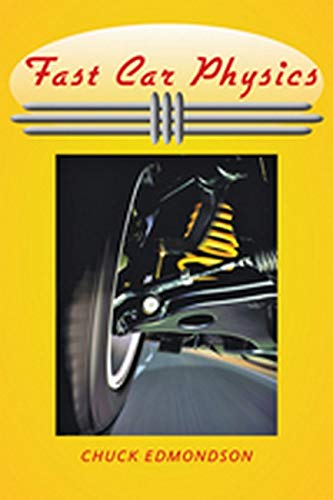
Revving engines, smoking tires, and high speeds. Car racing enthusiasts and race drivers alike know the thrill of competition, the push to perform better, and the agony―and dangers―of bad decisions. But driving faster and better involves more than just high horsepower and tightly tuned engines. Physicist and amateur racer Chuck Edmondson thoroughly discusses the physics underlying car racing and explains just what’s going on during any race, why, and how a driver can improve control and ultimately win.
The world of motorsports is rich with excitement and competition―and physics. Edmondson applies common mathematical theories to real-world racing situations to reveal the secrets behind successful fast driving. He explains such key concepts as how to tune your car and why it matters, how to calculate 0 to 60 mph times and quarter-mile times and why they are important, and where, when, why, and how to use kinematics in road racing. He wraps it up with insight into the impact and benefit of green technologies in racing. In each case, Edmondson’s in-depth explanations and worked equations link the physics principles to qualitative racing advice.
From selecting shifting points to load transfer in car control and beyond, Fast Car Physics is the ideal source to consult before buckling up and cinching down the belts on your racing harness.

The names ‘Keith Duckworth’ and ‘DFV’ are practically synonymous, such is the reputation of the famous F1 racing engine which he designed.
Whilst there are books covering the technical aspects of the DFV engine, and other designs from Cosworth, the company which he founded with Mike Costin, there are many gaps in the story of Duckworth’s career, before and after Cosworth. This book comprehensively fills those gaps, taking the reader into the world of Britain’s finest 20th century engineers.
It was a world consisting of far more than motorsport, embracing an astonishing variety of mechnical devices, including aircraft, boats, and motorcycles – particularly Triumph, for whom he was a consultant during his retirement.
A man of strong convictions and high integrity, Keith Duckworth OBE cared passionately about his work, fitting almost every aspect of his life around it. His northern industrial roots, the ups and downs of his personal life, his health problems, and his generous support of charities and business start-ups, combine to create the story of one of motorsport’s – and engineering’s – most endearing and enduring characters.
Foreword by Sir Jackie Stewart OBE.
Autobooks-Aerobooks 2900 W. Magnolia Blvd. Burbank, CA 91505 (818) 845-0707 Hours: Tuesday-Friday 10:00 AM – 6:00 PM Saturday 10:00 AM – 6:00 PM Closed Sunday and Monday Accept Credit Cards gift cardYES, We have Gift Cards - Click Here AUTOBOOKS IS OPEN...
Autobooks-Aerobooks 2900 W. Magnolia Blvd. Burbank, CA 91505 (818) 845-0707 Hours: Tuesday-Friday 10:00 AM – 6:00 PM Saturday 9:00 AM – 6:00 PM "Cars & Coffee" on Saturday morning! Closed Sunday and Monday Accept Credit Cards YES, We have Gift Cards - Click Here Terms...









